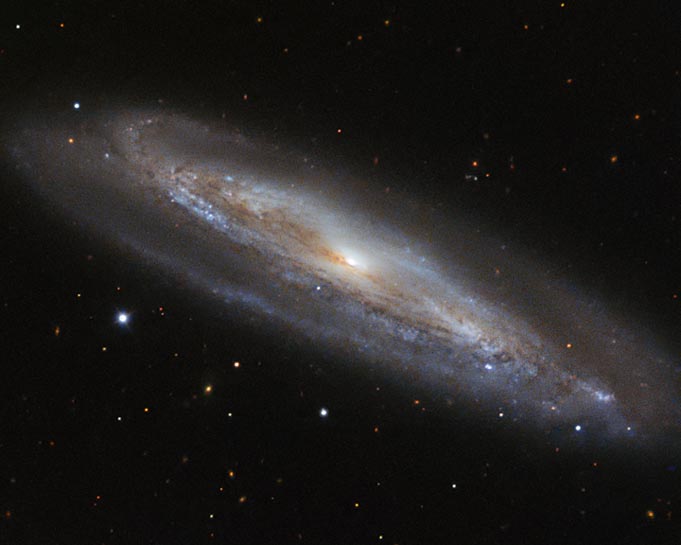
Spiral Galaxy
RA 12h 13m 48.77s Dec 14° 54' 7.97"
Coma Berenices
50 million light years
10.1
9.8 × 2.8 arcmin
7.48 x 6.23 arcminutes
North is 90.9° left of vertical
ESO
September 5, 2016
Closeup: S1925
ABOUT THIS IMAGE:
The color blue has many associations - coldness, sadness, serenity. However, the color holds a completely different meaning for astronomers, as demonstrated by the edge-on spiral galaxy Messier 98.
Messier 98, also known as NGC 4192, is located approximately 50 million light-years away in the constellation of Coma Berenices (Berenice's Hair). In this spectacular image from ESO's New Technology Telescope (NTT), the galaxy's perimeter, rippled with gas and dust, is dotted with pockets of blueish light. These are regions filled with very young stars, which are so hot that they glow with a bright blue hue. These young stars are burning at such high temperatures that they are emitting fierce radiation, burning away some of the dense material that surrounds them. In total, Messier 98 is thought to contain one trillion stars!
The NTT is a 3.58-meter telescope at the La Silla Observatory, which pioneered the use of active optics and was the first in the world to have a computer-controlled main mirror.
From Wikipedia:
Messier 98, also known as M98 or NGC 4192, is an intermediate spiral galaxy located about 44.4 million light-years away in the constellation Coma Berenices, about 6° to the east of the bright star Denebola. It was discovered by French astronomer Pierre Méchain on March 15, 1781, along with nearby M99 and M100, and was cataloged by French astronomer Charles Messier on April 13, 1781 in his Catalogue des Nébuleuses & des amas d'Étoiles. Messier 98 has a blue shift and is approaching us at about 140 km/s.
Messier
98 is a member of the Virgo Cluster, which is a large, relatively nearby
cluster of galaxies. About 750 million years ago, Messier 98 may have
interacted with the large spiral galaxy Messier 99. The two are now separated
by a distance of 1,300,000 light-years.